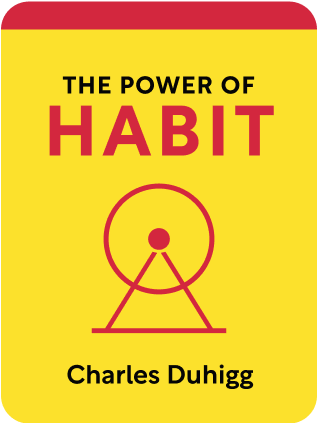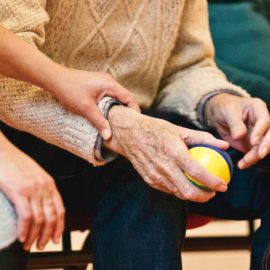

This article is an excerpt from the Shortform book guide to "The Power of Habit" by Charles Duhigg. Shortform has the world's best summaries and analyses of books you should be reading.
Like this article? Sign up for a free trial here .
Do you want to know how to create a new habit? Why are rewards so crucial in making new habits stick?
In his book The Power of Habit, Charles Duhigg says that the key to creating new habits is to put a reward system in place. You need your brain to crave that reward, otherwise, the habit won’t stick.
Here’s how to create new habits, according to Charles Duhigg.
Create an Entirely New Habit
Charles Duhigg says that once you’ve learned how to deconstruct your existing habits to understand and replace them with new habits, you can apply that understanding to create entirely new habits.
Let’s explore how to create a new habit using your understanding of how habits work. For this example, the new habit will be taking an hour-long walk every morning:
Decide upon your cue and your reward: Duhigg claims that new habits require a clearly defined cue and a reward to become automatic routines. Decide on a cue to signal the start of your habit, such as leaving your walking boots where you can see them. Then decide what your reward is, such as listening to an audiobook you enjoy during your walk, or treating yourself to a cup of hot chocolate when you get back.
(Shortform note: James Clear (Atomic Habits) argues that the easiest way to implement this step is to specifically link your new cue and reward to an existing routine. This way, you’ve already completed the hardest part of your new habit—determining the cue and reward—and you simply have to follow through with your intended action. For example, you decide that after brushing your teeth, you’ll put on your walking boots and head out. When you come back, your reward will be to eat breakfast and read a chapter of your book. Because you already brush your teeth, eat breakfast, and read a chapter of your book every morning, it’s easy to link your new habit to the cues and rewards in your existing routine.)
Develop a craving for your reward: According to Duhigg, the more positive you feel about your reward, the more likely your brain will want to set up an automatic routine to support your new habit. Duhigg suggests that you find ways to actively develop a craving for your reward—visualizing, anticipating, or imagining this reward.
(Shortform note: In Awaken the Giant Within, Tony Robbins expands upon Duhigg’s claim that your reward must feel positive by arguing that neuro-associations—the way your brain links certain experiences with pain and others with pleasure—influence all of your habits. According to Robbins, your brain relies on these neuro-associations to direct your behavior toward feeling pleasure and away from feeling pain, and you have to reprogram these associations to create new automatic routines. So, your brain’s more likely to create an automatic routine for your new habit of walking if you remove all pain points from the routine and set it up to feel as pleasurable as possible.)
Make a plan to overcome obstacles: You might feel reluctant to go for your morning walk for a number of reasons, such as if you feel tired or if it’s raining outside. Duhigg claims that you’re more likely to stick to your new habits if you predict these obstacles and plan ways to reduce your reluctance. For example, you could go to bed earlier so that you don’t feel tired or invest in a good raincoat and walking boots so that you can go out in any weather.
(Shortform note: Brendon Burchard (High Performance Habits) claims that the tendency to focus on obstacles and limitations occurs when you don’t have a clear purpose for your actions. This causes you to focus too much on the difficulty of overcoming your present circumstances (unwanted habits) to look to the future (the benefits of your new habits). Burchard encourages you to focus on your purpose—what you’ll gain from overcoming your obstacles—and use this to motivate yourself to move forward with your new habit.)
Believe That You Can Change Your Habits
Now that you understand how to redesign your habits, let’s discuss how believing in your ability to change improves your chances of successfully changing any habit.
Duhigg argues that belief is an essential part of overcoming your cravings and permanently changing any habit. Sometimes your cravings will feel unbearable and you’ll want to fall back into your old habits. During these times, it’s critical to believe that you can overcome your cravings and consciously decide how you want to act.
| Unrealistic Beliefs Set You Up for Failure The idea that self-belief improves your chances of success is not new—numerous studies prove that positive expectations encourage you to rise above any limitations you face and focus on solutions that move you toward what you want. However, psychologists warn that unrealistic positive expectations—such as blindly believing that you’ll easily overcome your habits without effort—set you up for failure because they don’t prepare you to take proactive steps to counter the inevitable obstacles that you’ll face. On the other hand, realistic positive expectations acknowledge that the road to change requires effort and persistence. This attitude forces you to take a proactive approach towards making the changes that you want. For example, a weight-loss study discovered that participants who believed that they’d easily succeed lost considerably less weight than those who prepared themselves for potential challenges. The “easy” group failed to honestly assess challenges such as their cravings for unhealthy snacks or their tendency to find excuses to avoid exercising. Consequently, they weren’t prepared enough to overcome and replace the habits that led them to gain weight in the first place. |
One way to bolster your belief in your ability to change your habits is to engage with people who have successfully overcome the same cravings. According to Duhigg, hearing the stories and strategies of people who have successfully changed their habits will increase your confidence and inspire you to stick with your decision to change. Therefore, consider how you can surround yourself with people who can help you stick to your plan.
(Shortform note: We’ve already established how social habits impact individual beliefs and habits. Interestingly, the reverse is also true. Sociologist Nicholas Christakis cites various research studies on smoking, drinking, obesity, divorce, and altruism to explain how individual habits impact social beliefs and habits just as much as social habits impact individual beliefs and habits. He explains that not only do you forge relationships with people who are like you, but also that your behavior spreads to friends, friends of friends, and so on. This eventually influences what complete strangers think of as normal. Consequently, you’re both vulnerable to the influence of social habits, and you have the power to influence the social habits of others.)

———End of Preview———
Like what you just read? Read the rest of the world's best book summary and analysis of Charles Duhigg's "The Power of Habit" at Shortform .
Here's what you'll find in our full The Power of Habit summary :
- The 3 steps to change your habits
- Why habits are at the root of success in football
- How social movements are just an expansion of habits from individuals to communities






